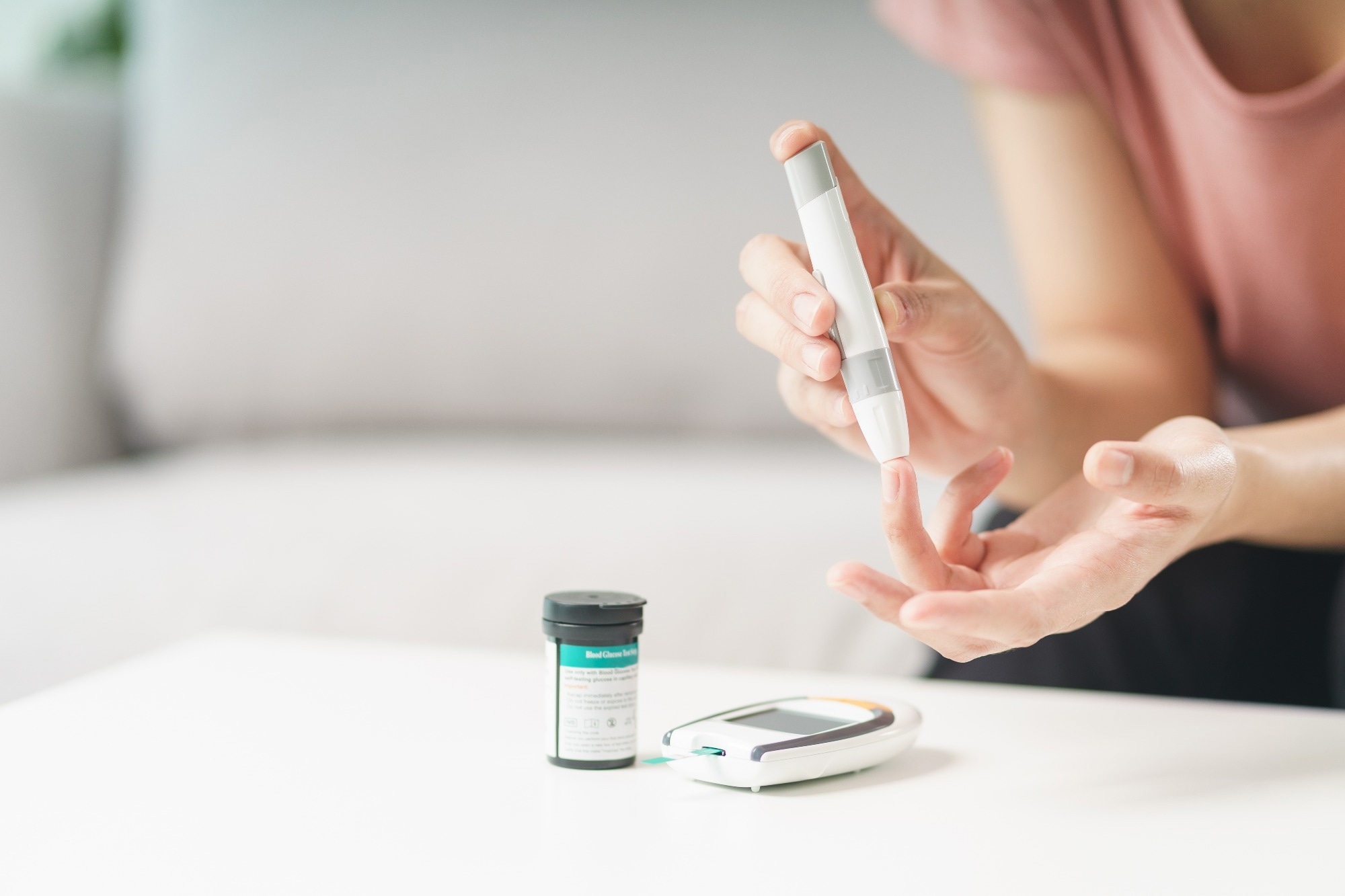In a recent study published in the journal Nature Medicine, researchers examined fasting glucose (FG) variability in nondiabetic adults using continuous glucose monitoring (CGM), assessing its impact on diabetes classification and its association with clinical measures.
 Study: Continuous glucose monitoring and intrapersonal variability in fasting glucose. Image Credit: Suriyawut Suriya / Shutterstock
Study: Continuous glucose monitoring and intrapersonal variability in fasting glucose. Image Credit: Suriyawut Suriya / Shutterstock
Background
The global increase in prediabetes and diabetes poses significant health risks and financial burdens. Diagnosis primarily relies on elevated plasma fasting glucose (PFG), glycated hemoglobin (HbA1c) levels, the oral glucose tolerance test (OGTT), or random plasma glucose in symptomatic individuals. However, the OGTT is often bypassed due to its cost and inconvenience, leaving PFG and HbA1c as key diagnostic tools, especially for asymptomatic cases. Despite its diagnostic importance, the day-to-day variability of PFG in nondiabetic individuals remains underexplored, potentially leading to misdiagnosis. CGM devices, which measure interstitial glucose levels, offer improved accuracy over time and are now used independently or in hybrid closed-loop systems for insulin dosing. Further research is needed to develop CGM-based diagnostic criteria that accurately reflect the intrapersonal variability of FG levels and their clinical implications.
About the study
The present study analyzed data from the 10K study, focusing on individuals aged 40 to 70 years. At baseline, various measures, including lifestyle, nutritional habits, vital signs, and medical history were collected alongside specific tests such as blood tests, electrocardiography, and CGM using the FreeStyle Libre Pro Flash system for two weeks. This study included participants without a self-reported diagnosis of type 2 diabetes or related conditions who also engaged in active meal logging alongside their CGM data. Exclusion criteria were rigorous, including abnormal CGM readings and inadequate meal logging.
The research particularly emphasized FG measurements during morning hours, utilizing CGM data to observe intrapersonal variability and its potential impact on diabetes diagnosis. The methodology ensured a realistic emulation of fasting conditions, relying on at least 8 hours of no caloric intake prior to the measurement windows and rigorous meal logging criteria. A total of 8,315 individuals with 59,565 fasting morning windows were analyzed for FG variability and its correlation with various clinical measures, including anthropometry, vital signs, and sleep monitoring, among others. Sleep monitoring employed the Food and Drug Association (FDA)-approved WatchPAT-300 device, while detailed retinal imaging and other health metrics were carefully analyzed for associations with FG variability. Furthermore, the study applied statistical analyses to explore the relationship between FG variability and clinical measures, considering age and gender.
Study results
In analyzing FG measurements from 8,315 individuals across 59,565 morning windows, researchers delved into the details of FG variability and its implications for diabetes classification. The study participants, averaging 51.3 years, had a mean body mass index (BMI) of 25.92 ± 4.07 kg m−2. Data collection was rigorous, with morning FG measurements taken between 06:00 and 09:00, following a predefined minimum of 8 hours of fasting, although the actual mean fasting duration was over 10 hours. Notably, fasting duration showed no significant correlation with FG values.
The study's methodology was thorough in calculating FG for each individual, ensuring valid morning windows through strict criteria, including active meal logging. This large-scale examination revealed an average FG value of 96.2 mg dl−1, which was observed to increase slightly with age, indicating a gradual rise in glucose levels over time. The analysis also highlighted considerable day-to-day variability in FG measurements within individuals, a finding that underscores the complex nature of glucose metabolism and its sensitivity to various factors.
In assessing the potential for misclassification of diabetes and prediabetes based on FG levels, the research unearthed significant variability. A notable portion of participants experienced shifts in their glycemic status classification throughout the study, emphasizing the limitations of relying on a single FG measurement for diagnosing diabetes. This variability, coupled with the narrow range defining normal and diabetic FG levels, suggests a need for refined diagnostic criteria to better accommodate individual glucose reading fluctuations.
The study also examined the clinical correlations of FG variability to various health indicators such as body composition, blood pressure, and liver function. Interestingly, FG variability showed significant associations with several clinical measures, highlighting its potential as a marker for metabolic health. Particularly, correlations with body composition and daily caloric intake suggest that FG variability might reflect broader metabolic processes beyond glucose regulation alone.
Conclusions
To summarize, this research analyzed FG data from 8,315 nondiabetic individuals using CGM, uncovering significant FG variability that challenges the reliability of current diabetes diagnostic criteria based on PFG. Initial classifications indicated most participants had normal FG levels, but further measurements suggested a substantial shift towards prediabetes, highlighting the risk of misclassification. The study demonstrated that increasing the number of FG tests could significantly reduce misdiagnosis. Additionally, it found meaningful associations between FG levels and various clinical measures within normal glucose ranges, suggesting the need for a better approach to diabetes diagnosis that considers the variability and dynamic nature of FG levels.